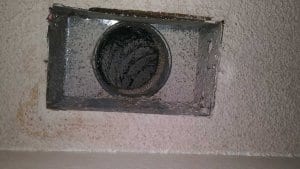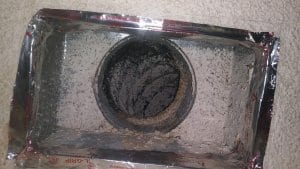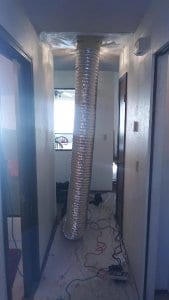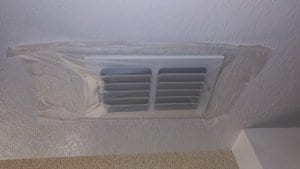
We have received a few inquiries after discussing duct cleaning last week and what the causes could be to make ductwork appear dirty. Most people wanted more information on duct testing, sealing and repairing, or when it is time to consider replacement.
The most important thing to note is that any of the below suggestions, when done stand alone and not at the time of equipment replacement, will then not need to be done over again at the time of equipment replacement. This means you can save money now (lower energy costs) and save money later (these repairs won’t have to be done as required by state and local regulations with equipment replacement). Consumers biggest concern is typically redundant spending on something. This will not be the case with duct repairs/replacement.
The Department of Energy studies have shown up to 40% of the air can be lost due to air leaks in the duct system. In the past, that meant over sizing heating and air equipment to compensate for these losses. That means spending more money upfront on the system and more money on utility bills just to heat or cool your attic/crawl spaces. Here in California that isn’t the case. Title-24 requires us to test the ductwork on each heating and air system replacement. We have to meet or beat a maximum duct leakage of 15% on existing duct systems or 5% on new duct systems. This is why if you do it now, you are saving us time and materials when you replace your HVAC system in the future.
How it is done: If you call to have us test your existing ductwork, we come out with our DuctBlaster machine. We seal all of the supply registers to the ceiling with plastic and attach the DuctBlaster to the return air duct to pressurize the duct system by pushing air into it. This procedure measures air leakage by how much the pressure drops using a manometer. Once we know how much air is being lost, we can do a visual inspection of the ductwork to determine where the air is leaking from.

 Supply box after- sealed with foil backed duct tape
Supply box after- sealed with foil backed duct tapeSealing all of the metal boxes in the ceiling or floor to the sheetrock (or subfloor) with heavy-duty foil- backed duct tape will prevent attic (or crawlspace) air from being pulled into the home. This is a huge benefit for indoor air quality in addition to an efficient system. The return air boxes are sealed as well.
The next culprit we look for is usually at any metal joints where ducts connect. These joints are typically wrapped in insulation. If the insulation is still yellow (or pink), all is well. If the insulation is brown, we unwrap and seal the metal with mastic (caulking) then rewrap in insulation. The insulation acts as a filter and the brown coloring is a clue that air has been pulling through with that vacuum effect mentioned last week. We then know there is an open air leak on the other side of the insulation wrap.
Other things we look for besides obvious openings in ductwork is to make sure that all ducting is strapped up properly. Sags in ductwork can slow airflow which causes performance issues as well. After a duct test is performed if repairs are necessary but a full replacement is not, we will quote you what we call a “wrap, strap, and seal.” We are going to go through and do all of the above-mentioned repairs to get the system as buttoned up as tightly as possible. We also include duct testing at the end to show you the difference in air loss both before and after.
When do you know duct replacement is needed versus a duct repair? Sometimes it is noticeable without needing to test the ducting. Flexible ductwork has three components: the inner plastic liner with coil spring, a layer of insulation, and an outer vapor barrier. If the outer barrier is torn (or in some cases completely deteriorated) and the insulation is flopped open and all you see is the clear tube of plastic your air is running through? This is when you need to replace a duct. If you have had rodent issues where they have been either living, dying, or defecating in the ductwork, it is definitely time to replace the ducting. If your home was originally equipped with a furnace only and no air conditioning, the ductwork that was installed originally is much too small to handle the airflow needed for air conditioning and should be replaced when air conditioning is added on. Even if central air conditioning had already been added at some time along the way, we will know right away if the ducting is adequate to handle modern air conditioning.
If you’d like to schedule an appointment for air duct testing or a visual inspection on possible damage, don’t hesitate to give us a call at the office at 916-481-0658 or click Perfection Home Systems to contact us by email.



